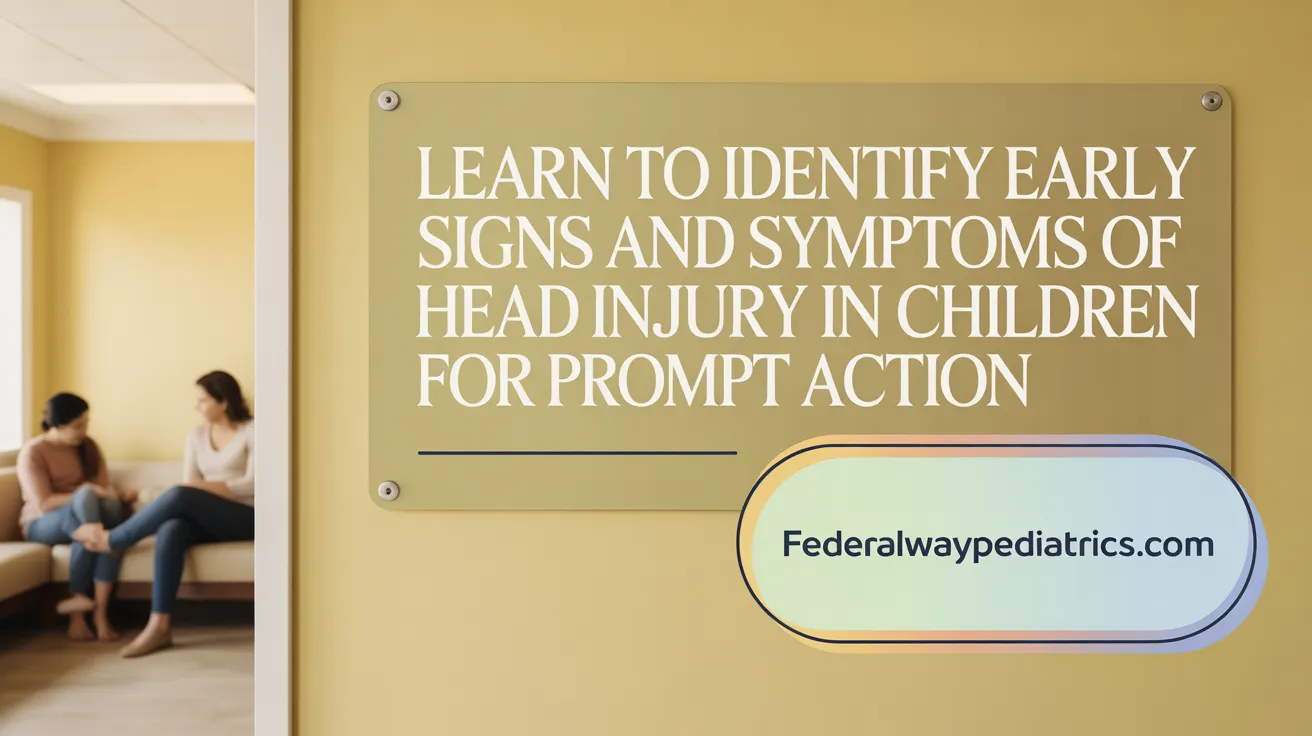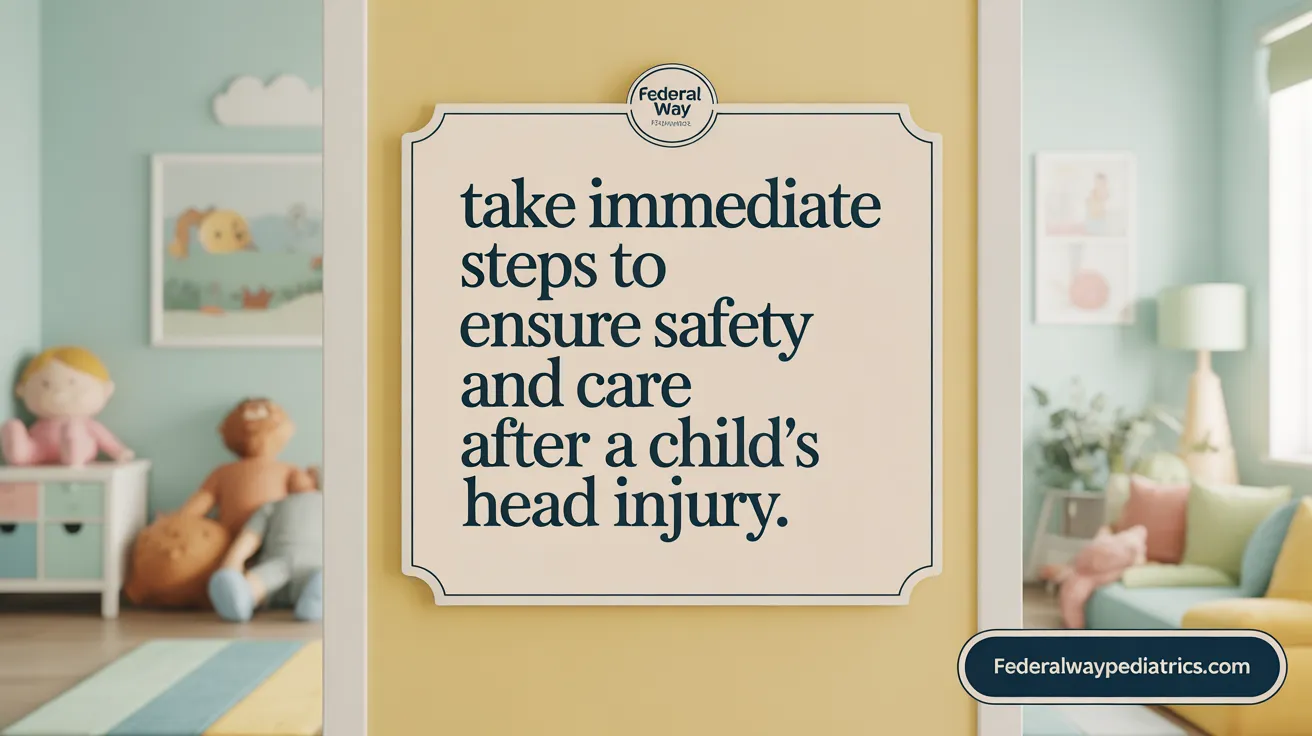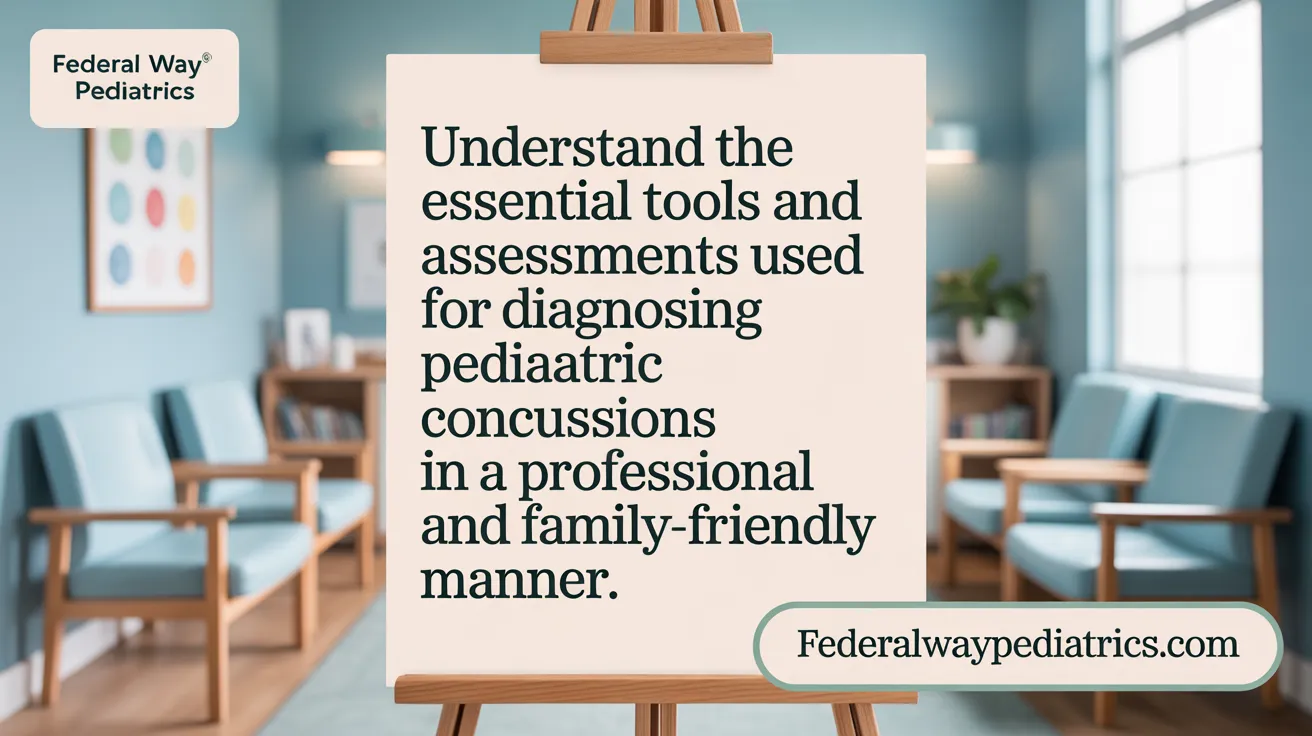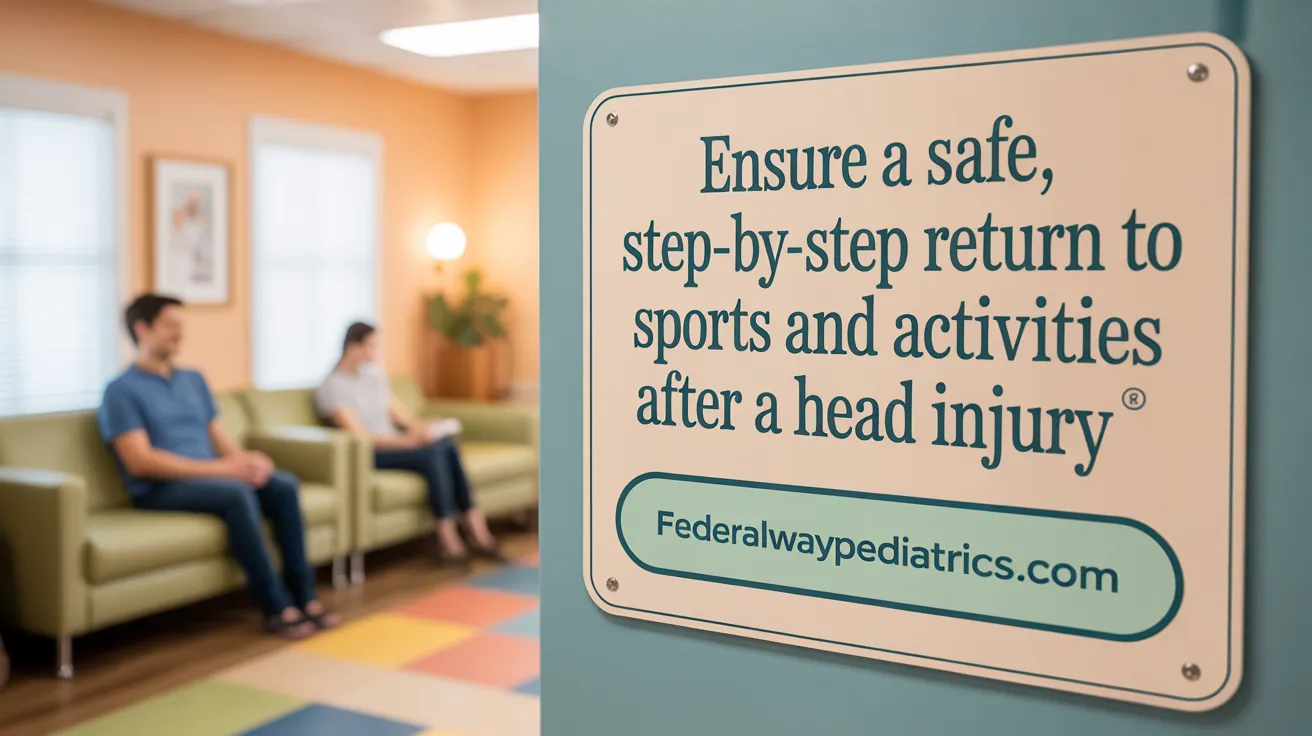Understanding the Impact of Concussions in Children
Concussions are a common yet serious form of mild traumatic brain injury in children, caused by a bump, blow, or jolt to the head or body that disrupts normal brain function. Recognizing and responding appropriately to concussions is critical to ensuring children's safe recovery and preventing long-term complications. This guide provides essential information for parents, caregivers, educators, and coaches on identifying concussion symptoms, seeking timely medical care, managing recovery, and safely returning children to their activities.
Recognizing Signs and Symptoms of Concussion in Children

What are the common signs and symptoms of concussion in children?
Common indicators of a concussion in children include physical symptoms such as headache, dizziness, nausea or vomiting, and increased sensitivity to light or noise. Cognitive changes may manifest as confusion, difficulty concentrating, or forgetting recent events. Emotional and behavioral shifts like irritability, anxiety, sadness, or mood swings are also typical.
Children might appear slow to respond or unsteady when walking. Sleep disturbances such as trouble falling asleep or sleeping more or less than usual are also common.
In infants and young children, signs may be less obvious and include persistent crying, refusal to eat, irritability, or changes in sleep and behavior patterns. These subtle symptoms can sometimes be mistaken for normal childhood behaviors.
However, some signs point to more serious concerns that require urgent medical attention. These include seizures, episodes of repeated vomiting, loss of consciousness, or worsening headache. Immediate care should be sought if such severe signs are observed.
Recognizing these symptoms early is crucial in managing a child's recovery and preventing complications. Parents, teachers, and coaches should stay alert to these signs, especially after a head injury or fall.
Appropriate Immediate Response and Initial Care

What actions should be taken if a child is suspected of having a concussion?
When you suspect your child has sustained a concussion, the first step is to immediately remove them from any physical activity or sports. This helps prevent further injury and allows for close monitoring.
After removing the child from activity, keep a close watch over their condition for the next 24 to 48 hours. Look out for worsening symptoms such as a severe headache, repeated vomiting, increased confusion, seizures, or any significant change in behavior. If these signs appear, seek emergency medical care right away.
Rest is crucial for recovery. Both physical and mental activities should be limited, which includes avoiding screens, reading, or stressful tasks. The child should be kept in a calm, comfortable environment.
It’s important to seek a medical assessment promptly. Healthcare professionals can evaluate the severity of the injury through symptom review and examination, and determine the safest way for the child to return to routine activities.
Remember, children should only return to sports or high-risk activities once they have been fully evaluated by a healthcare provider and received clearance. Following a stepwise, supervised return-to-play protocol ensures safety and helps prevent complications.
Medical Assessment and Diagnostic Tools for Childhood Concussion

What tools are used for assessing concussions in children?
Assessing concussions in children involves a combination of clinical judgment and standardized assessment tools tailored for the pediatric population. Healthcare professionals typically begin with a thorough medical history and physical examination, focusing on the child's symptoms, the injury mechanism, and any changes in behavior or physical function.
Standardized tools like the Child SCAT3 and Child SCAT5 are commonly employed. These assessments evaluate symptom severity, cognitive abilities such as memory and concentration, and balance or coordination. The Pediatric Concussion Assessment integrates these tools to provide a comprehensive picture of the child's condition.
Alongside clinical evaluations, sideline assessment scores like the child-Maddocks Score help determine immediate concussion suspicion during sports events. Additional specialized assessments include the Standardized Assessment of Concussion for Children (SAC-C), which tests cognition, orientation, and immediate memory.
Emerging diagnostic aids enhance accuracy. Pupillometers measure pupillary light reflex to detect brain dysfunctions. Visio-vestibular exams evaluate eye movements, balance, and vestibular function, while gait analysis using force plates or balance boards can reveal abnormalities in coordination.
Furthermore, the Acute Concussion Evaluation (ACE) provides a detailed symptom checklist, guiding clinicians through the assessment process.
While imaging such as CT or MRI is not routinely required, it becomes crucial if there are signs of severe injury or persistent neurological deficits, such as seizures or worsening consciousness.
Combining these assessment tools with clinical judgment ensures accurate diagnosis and management plans for children suspected of having a concussion.
Managing and Treating Childhood Concussions: Principles and Protocols

What are the main principles and protocols for managing and treating childhood concussions?
Managing childhood concussions requires a careful balance between immediate recognition, appropriate care, and staged return to activities with medical supervision. Key principles include early detection of symptoms, removal from sports or strenuous activities right after injury, and a tailored recovery plan.
Initial management focuses on 'relative rest,' which means children should rest both physically and mentally. This includes avoiding screens, lights, loud noises, and heavy physical exertion. Sleep is encouraged, but children should be monitored for symptoms like worsening headache or confusion.
Healthcare providers typically conduct thorough assessments such as detailed physical and neurological exams, symptom review, and neurocognitive tests like ImPACT to understand the extent of injury. These assessments guide treatment decisions and help track recovery progress.
Protocols such as the 4R's—Recognize, Remove, Recover, Return—are fundamental. Recognize signs of concussion early, remove the child from activity, allow time for recovery, and only initiate a gradual return-to-play or return-to-school process once fully symptom-free. The return involves multiple stages, starting with light activities and progressing slowly, only after clear guidance from a healthcare professional.
Repeated testing and ongoing symptom monitoring are essential. Children should not resume vigorous activities or sports until they pass each stage of the protocol and receive explicit medical clearance. This phased approach minimizes risks of secondary injury, including severe complications like Second Impact Syndrome.
In addition to rest and gradual reintroduction of activities, some children may require adjustments or accommodations at school or in daily routines. Persistent or worsening symptoms call for specialist referrals to neurology or concussion clinics. Education about concussion management is provided to parents, teachers, coaches, and the children themselves to promote safety and swift recovery.
Overall, effective management combines prompt, evidence-based strategies with continuous oversight, ensuring safe return to normal activities and reducing the risk of long-term effects.
Safe Return to Activity and Play After Concussion

How is a safe return to activity or play after a concussion determined?
A proper, cautious approach is essential for children recovering from a concussion to return safely to sports and daily activities. Medical professionals play a central role in guiding this process through a staged, gradual protocol known as the 6-Step Return to Play Progression.
This plan involves progressing through several stages, starting from complete rest to full participation in sports. Each stage typically lasts at least 24 hours and only advances if the child remains symptom-free. The stages include:
| Stage | Description | Goals | Extra Details |
|---|---|---|---|
| 1 | Rest and recovery | Allow initial healing | Complete physical and mental rest, avoiding screens and strenuous activity |
| 2 | Light aerobic activity | Reactivate cardiovascular system without symptoms | Walking or light stationary cycling at easy intensity |
| 3 | Sport-specific exercise | Add movement without risk | Running drills or exercises specific to sport, no contact |
| 4 | Non-contact training drills | Increase intensity | More structured practice, No risk of head impact |
| 5 | Full contact practice | Reintroduce full participation | Only after medical clearance and with coach supervision |
| 6 | Return to play/competition | Full participation | Only after complete symptom resolution and healthcare approval |
A child is only allowed to progress to the next stage if they experience no symptoms at the current level. If symptoms reappear, they must return to the previous stage and wait for full recovery.
Criteria for progression through stages
Moving between stages requires the child to be symptom-free for at least 24 hours. Symptoms such as headache, dizziness, or fatigue mean the child should restart the previous stage and remain there until clear.
Physical and cognitive recovery is essential before resuming full activity. This includes returning to school work and normal social interactions without issues.
Role of medical clearance
Prior to full return, the child's healthcare provider must assess for ongoing symptoms and ensure safe progression. Medical clearance confirms that the child is physically and cognitively ready to resume full contact sports without risk of worsening injury or developing complications.
Return to school and classroom accommodations
Recovery involves coordinating with teachers and school health personnel. Some children may need classroom accommodations such as extended test time, decreased workload, or quiet environments to manage their symptoms.
Gradually resuming cognitive activities is critical to minimize symptom flare-ups and support overall recovery.
Risks of premature return and complications
Returning to activity too soon can lead to secondary injuries, such as Second Impact Syndrome, which can cause severe brain swelling. Premature activity also prolongs recovery and increases the risk for long-term problems like persistent symptoms or neurocognitive deficits.
It is vital to adhere strictly to medical advice and the stepwise protocol to ensure full recovery and prevent complications.
| Aspect | Risk of Premature Return | Long-term Risks |
|---|---|---|
| Physical activity | Increased injury risk | Extended recovery times |
| Cognitive exertion | Symptom worsening | Prolonged cognitive deficits |
| Emotional health | Mood deterioration | Chronic emotional problems |
By following structured, carefully monitored procedures, children can safely resume activities, promoting full recovery and reducing the chance of lasting complications.
Causes, Prevention, and Education to Reduce Childhood Concussions
What are the causes of concussions in children and how can they be prevented?
Concussions in children mainly result from impacts to the head, neck, face, or body that cause the brain to move or twist inside the skull. Common scenarios include falls from playground equipment, slips and trips at home or school, sports injuries—especially in contact sports like football, soccer, hockey, and lacrosse—as well as motor vehicle accidents and being struck by objects or individuals.
Children involved in high-impact activities or sports face increased risks, particularly if safety precautions are not followed. Prior history of concussions also raises the likelihood of future injuries.
Preventive measures are crucial in reducing the incidence of concussions. These include ensuring children wear properly fitted protective gear such as helmets, headgear, and mouthguards during sports and recreational activities. Creating safe environments at home, school, and playgrounds—like installing soft ground surfaces and avoiding dangerous structures—helps minimize falls.
Teaching children about safe playing techniques and encouraging honest reporting of head impacts or symptoms can lead to prompt medical evaluation and management. Additionally, performing neck-strengthening exercises can help stabilize the head during impacts.
Most importantly, education plays a vital role. Caregivers, teachers, coaches, and children must be aware of concussion risks, symptoms, and the importance of proper recovery and avoiding return to activities too soon. Maintaining awareness and vigilance reduces the severity and frequency of concussions, safeguarding the child's long-term brain health.
By combining protective gear use, environmental safety, and education, the risks of childhood concussions can be significantly lowered, fostering safer play and activity participation.
Key Takeaways on Child Concussions
Child concussions require vigilant recognition, prompt response, and careful management to support safe and full recovery. Understanding the varied symptoms, seeking timely medical advice, and following structured treatment protocols help protect children from the risks of repeated injury and long-term effects. Equally important are preventive measures and education to reduce incidence and encourage early reporting. Through awareness, appropriate care, and collaboration among families, schools, and healthcare providers, children can navigate concussion injuries safely and return confidently to their activities.
References
- Signs and Symptoms of Concussion | HEADS UP - CDC
- Concussions in Children | Boston Children's Hospital
- Concussions in Children & Teens: What Parents Need to Know
- Concussion in children: What are the symptoms? - Mayo Clinic
- What to do After a Concussion | HEADS UP - CDC
- Concussions - Pediatric Orthopedic Specialists
- Recognizing concussions during a game
- Concussions in Kids and Teens: What Parents Should Know - HSS
- How to Prevent Concussions in Kids- JDCH
- Concussion: What It Is, Symptoms, Causes & Treatments
